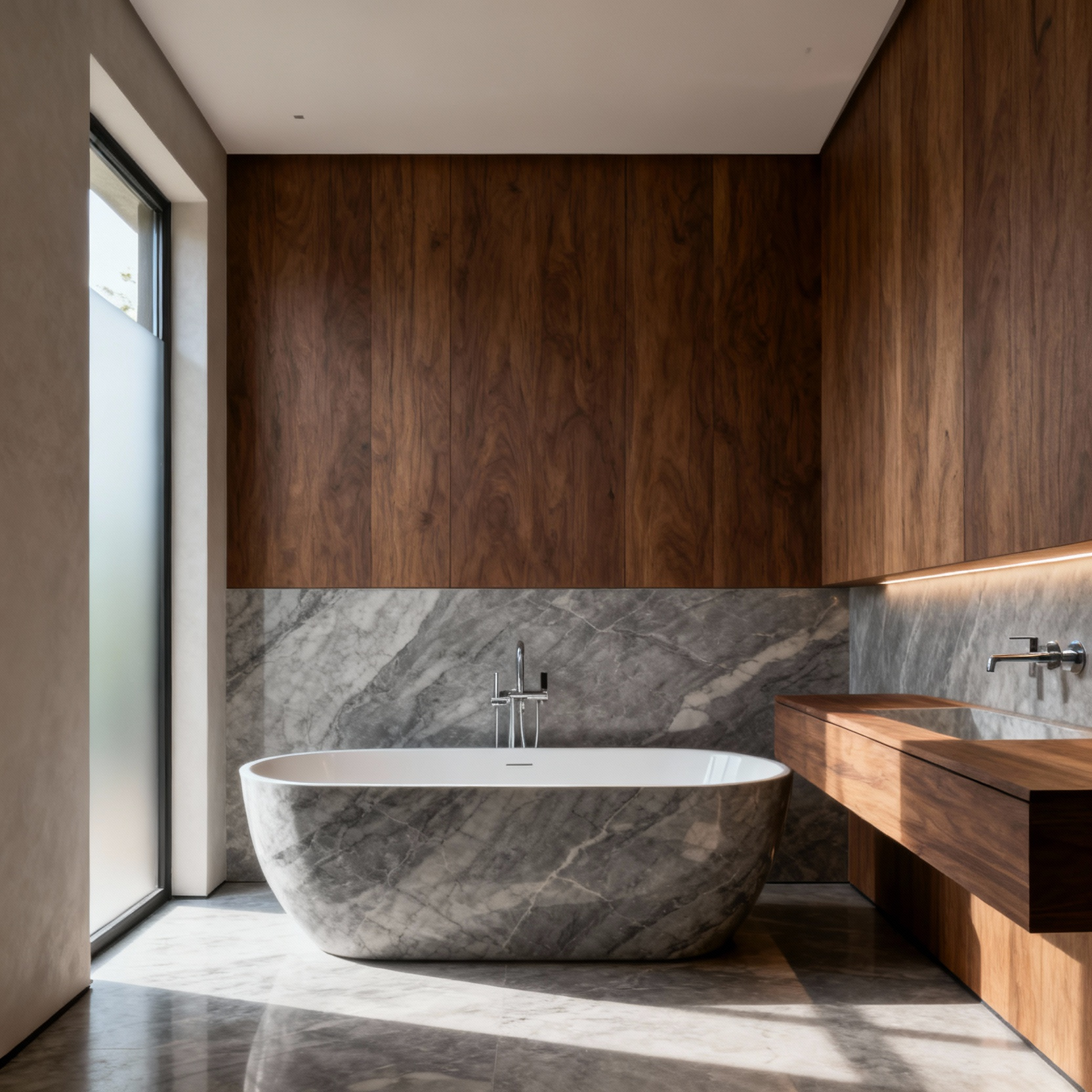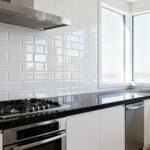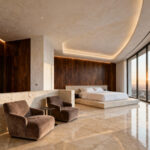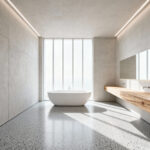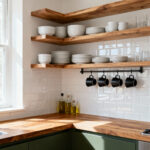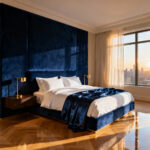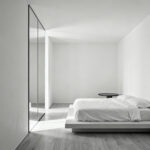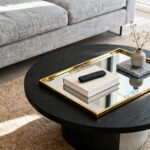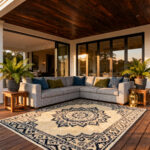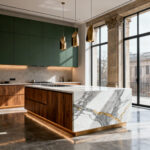The bathroom is no longer a room of mere utility. For those with a discerning eye, it is a private sanctum, a space for quiet restoration and a testament to one’s personal style. We promise that this most intimate of rooms can be a profound expression of bespoke luxury—a delicate balance of aesthetic brilliance and enduring appeal that design masters have perfected. After years spent curating the finest residential and retail spaces, I’ve identified the 20 foundational decisions that consistently create sanctuaries resonating with both visual grandeur and deep personal tranquility. These aren’t fleeting trends destined for obsolescence; they are principles of investment rooted in art and architecture.
This is more than just bathroom decoration inspiration. It’s a structured approach to creating a truly elevated living experience. My work in high-end interior design has taught me that the most successful spaces begin with a clear philosophy—a personal design lexicon that guides every choice. From there, we will move into the tactile world of exquisite materials, from the gravitas of Natural Stone to the seamless elegance of large-format porcelain. We’ll explore how to orchestrate layout and light to sculpt an environment that feels both expansive and intimate, and finally, we will integrate the technology and wellness features that define modern luxury. This is your definitive pathway to transforming a bathroom into the ultimate retreat.
Defining the Quintessential Sanctuary: Philosophical Foundations (Part 1)
Before a single tile is chosen, the most exceptional spaces are conceived from a guiding philosophy. True luxury isn’t about acquiring things; it’s about intentionality. This first principle is about looking inward to define the foundational tenets that will ensure your bathroom is not simply beautiful, but a deeply resonant reflection of who you are. We begin by exploring design as an extension of self, where nuance elevates function to an art form.
1. Establishing Your Personal Design Lexicon for an Enduring Aesthetic
The first, and most crucial, step in any design journey is to move past transient styles and define your own personal design lexicon. What does that mean? It means articulating the aesthetic that feels authentic to you. Are you drawn to the disciplined quiet of minimalism, the layered history of classicism, or the clean lines of modernism? Answering this honestly is the philosophical anchor that ensures coherence. Your bathroom, more than any other room, should feel like an extension of you, and this core identity will guide every subsequent choice, making the design truly timeless.

This lexicon is the filter through which all materials are chosen. For a client who craved Nordic serenity, we translated their vision into pale, unfinished timbers and cool grey microcement—a palette that whispers rather than shouts. Conversely, an affinity for classic glamour might manifest in deeply veined Calacatta marble, burnished brass, and the rich tactility of lacquered cabinetry. Every surface becomes an authentic expression of your aesthetic voice, lending a bespoke character that simply cannot be replicated from a catalog. What I tell my clients is that this self-discovery phase is the most valuable investment they’ll make in the entire project.
2. Embracing Biophilic Principles to Infuse Serenity and Natural Resonance
Biophilic design is a philosophy I integrate into almost every project. It’s built on our innate, evolutionary connection to nature. This is far more than placing a potted orchid on the vanity; it’s about weaving natural systems and forms into the very fabric of the room. By championing this connection, we can create a bathroom that actively reduces stress and fosters a profound sense of calm, turning a sterile environment into a truly restorative one. It’s about recognizing that well-being is the ultimate luxury.
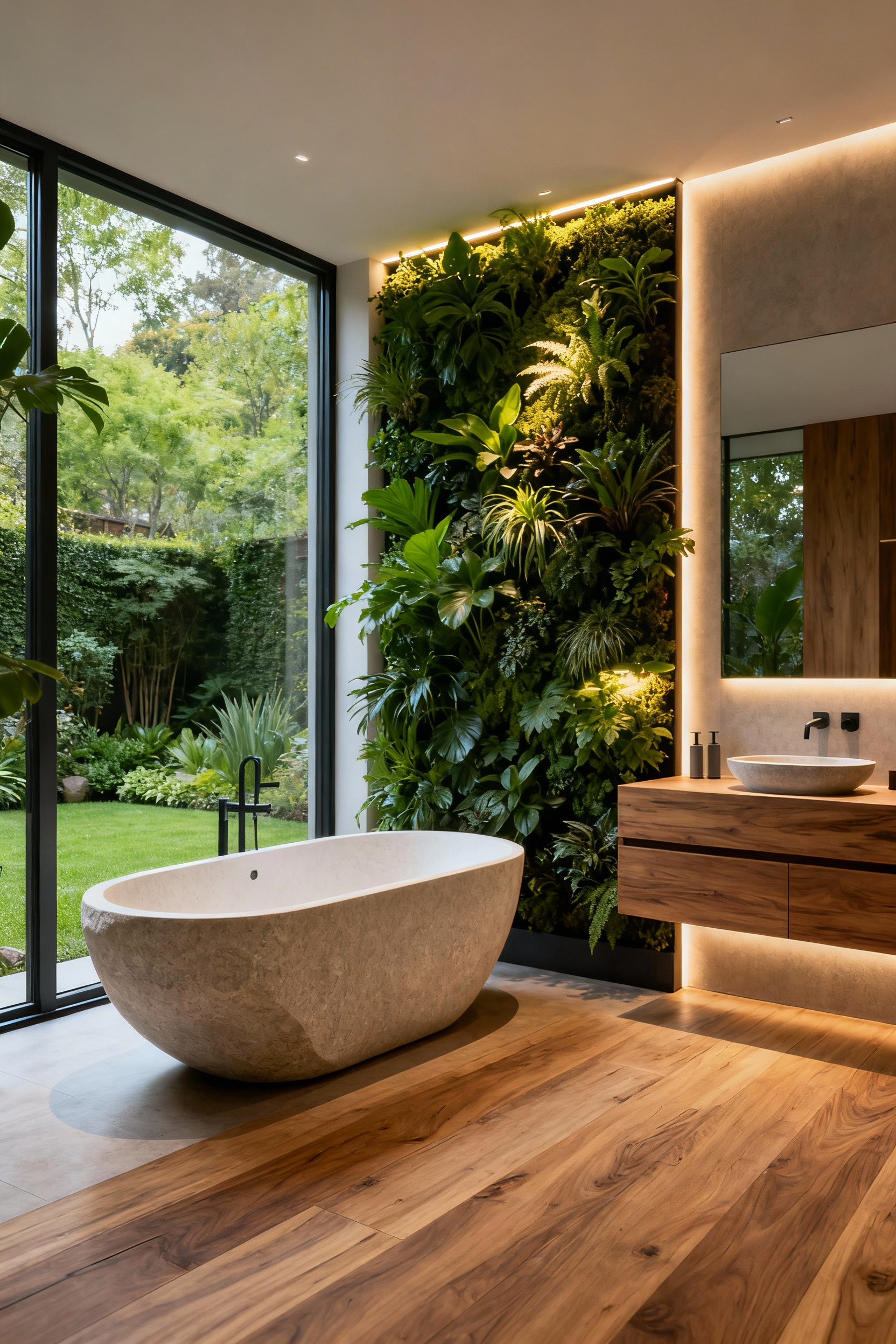
This perspective naturally leads to a curated exploration of materials. Think of the cool, smooth feel of river stones underfoot in a shower, the visual warmth of sustainably sourced teak cabinetry, or the subtle, organic patterns in handmade zellige tiles. The goal is a sensory experience. Spatially, this means maximizing natural light with large, unadorned windows or skylights, framing views of a garden, or even integrating a living green wall. A rain showerhead that emulates the gentle fall of water in a forest, for instance, elevates a daily routine into a meditative ritual. This isn’t just decoration; it’s designing for the soul.
3. Mastering the Art of Subtlety: Understated Elegance Through Restrained Palettes
True sophistication often lies in what is left unsaid. Understated elegance is a powerful design philosophy that champions quiet refinement over overt opulence. It’s an approach that values the integrity of the materials, the precision of the craftsmanship, and the harmony of the composition above all else. When you strip away the unnecessary, you allow the purity of form and texture to come forward. A space designed with this restraint has an intrinsic calm and a timelessness that will outlive any trend.

The key to this look is a masterfully curated and restrained palette. Instead of bold color, we find richness in a symphony of whites, creams, and tonal grays. The interest comes from the interplay of textures: the honed surface of marble against the gentle ripple of fluted glass, or the matte finish of Custom Cabinetry set against the soft gleam of unlacquered brass hardware. I learned early in my career that when you reduce the “color noise,” you amplify the beauty of everything else in the room. This approach demands perfection in execution, but the result is a serene sanctuary that feels both classic and entirely current.
4. Harnessing the Psychology of Color: Crafting Evocative Moodscapes
Color is not decoration; it is emotion. The most masterful interiors harness the psychology of color to intentionally craft a mood. This is particularly potent in a bathroom, where you begin and end your day. By understanding that color is felt as much as it is seen, you can design a space that actively supports your state of mind, whether you need to feel energized for the day ahead or wish to unwind in tranquility. The bathroom becomes a dynamic canvas for your emotional experience.
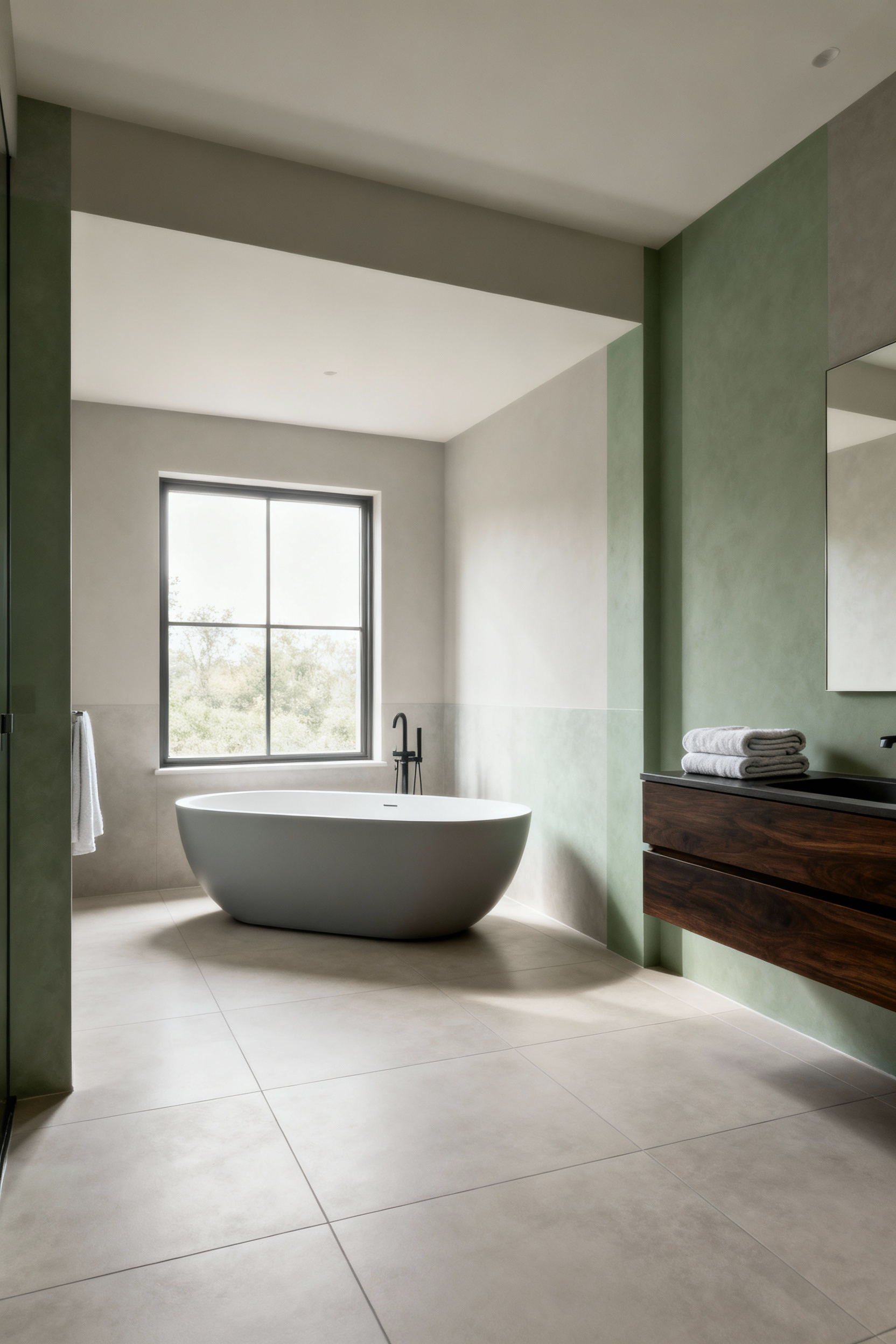
From my studies in Color Theory, I know that even the undertone of a neutral stone can change everything. Cool blues and greens, for example, evoke calm and are perfect for a spa-like retreat, while warm, earthy neutrals can feel grounding and deeply comforting. The material’s finish matters, too. A glossy tile will intensify a color and reflect light, creating energy, whereas a matte or honed finish will absorb light and soften the mood. By using color as the primary architect of the room’s feeling, you curate a space that is not only visually stunning but also deeply attuned to your personal well-being.
Defining the Quintessential Sanctuary: Philosophical Foundations (Part 2)
Before we explore materials and finishes, we must address an elemental principle that governs all great design: proportion. This concept, often felt more than seen, is the invisible architecture that imbues a space with balance and grace. Mastering it transforms a bathroom from a collection of fine objects into a cohesive and harmonious sanctuary.
5. The Imperative of Proportionality: Ensuring Visual Equilibrium and Harmony
Proportion is the silent arbiter of elegance. It is the art of relationships—the measured conversation between every element within a space, ensuring a feeling of innate rightness and visual calm. In my experience with high-end interior design, I’ve seen how getting the scale right is the secret to a room that simply feels good. When a vanity is perfectly scaled to the mirror above it, and a freestanding tub commands its space without overwhelming it, you achieve a visual equilibrium that is deeply restorative. This isn’t about rigid rules; it’s about training the eye to see harmony.
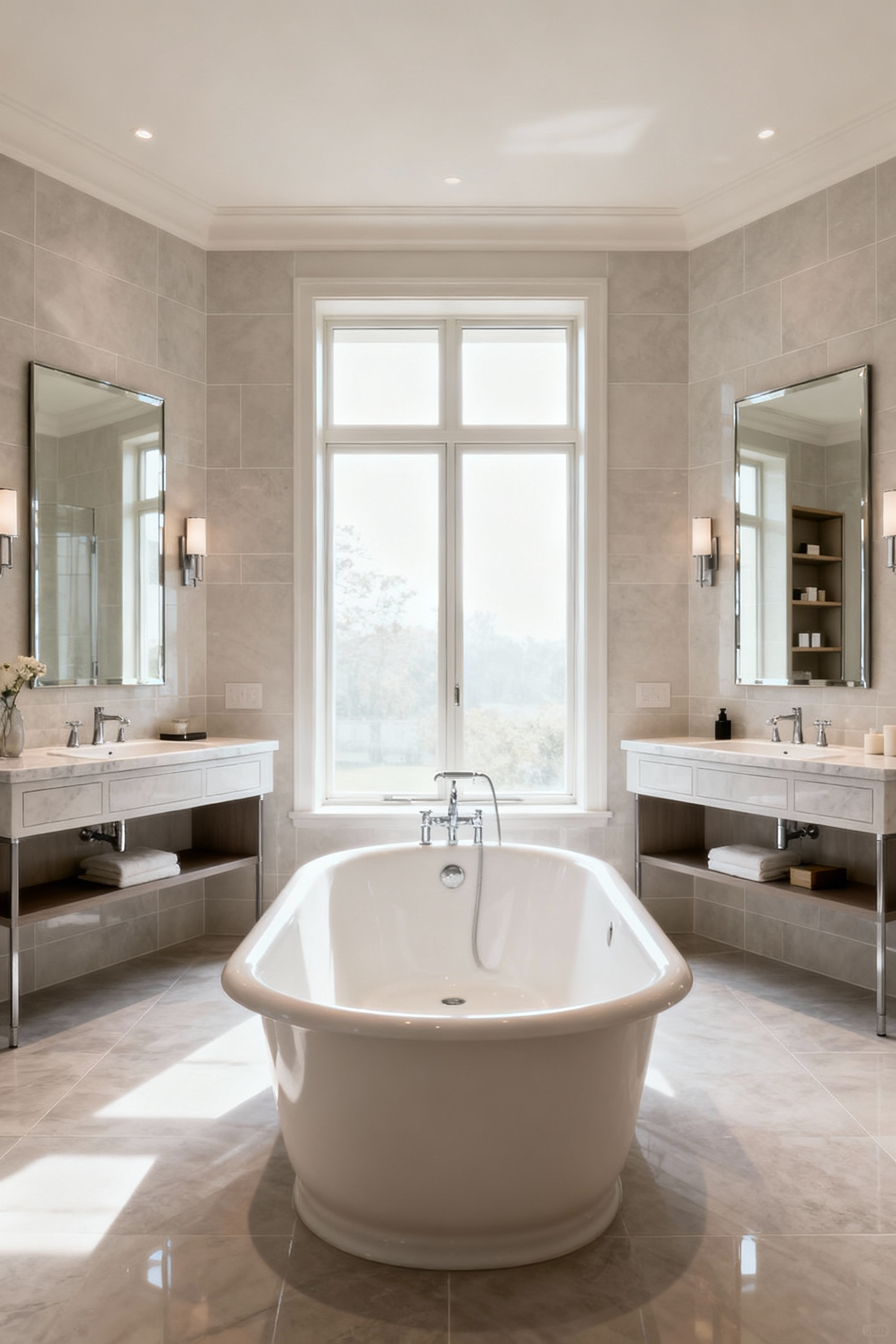
This principle dictates everything. In a bathroom with tall ceilings, a large-format slab of stone can feel majestic, whereas in a more intimate space, a smaller, intricately patterned tile might provide texture without feeling busy. Spatially, it’s about managing both the objects and the voids between them. The placement of a heroic freestanding tub anchors the room, creating an axis around which other elements gracefully orbit. But the negative space around it is just as important. A room that breathes feels luxurious. It is this artful balance that elevates a bathroom from well-appointed to truly exceptional.
Curating Sensory Experiences: Exquisite Material Selection and Finishes (Part 1)
The soul of a luxurious bathroom resides in its materials. This is where the design becomes tangible, a sensory experience crafted through the artful interplay of textures and tones. Here, we move from philosophy to the palpable, exploring the foundational materials and sophisticated finishes that create a canvas for unparalleled personal expression and daily delight.
6. The Allure of Natural Stone: Bestowing Timeless Grandeur and Unique Character
There is a reason natural stone has been the cornerstone of luxurious spaces for millennia. Each slab of marble, travertine, or granite is a singular work of art, telling a geological story through its unique veining and crystalline structure. This inherent authenticity bestows a gravitas and permanence that engineered materials simply cannot replicate. Using natural stone is an investment in legacy, ensuring your bathroom possesses a timeless grandeur and a character that is entirely its own.
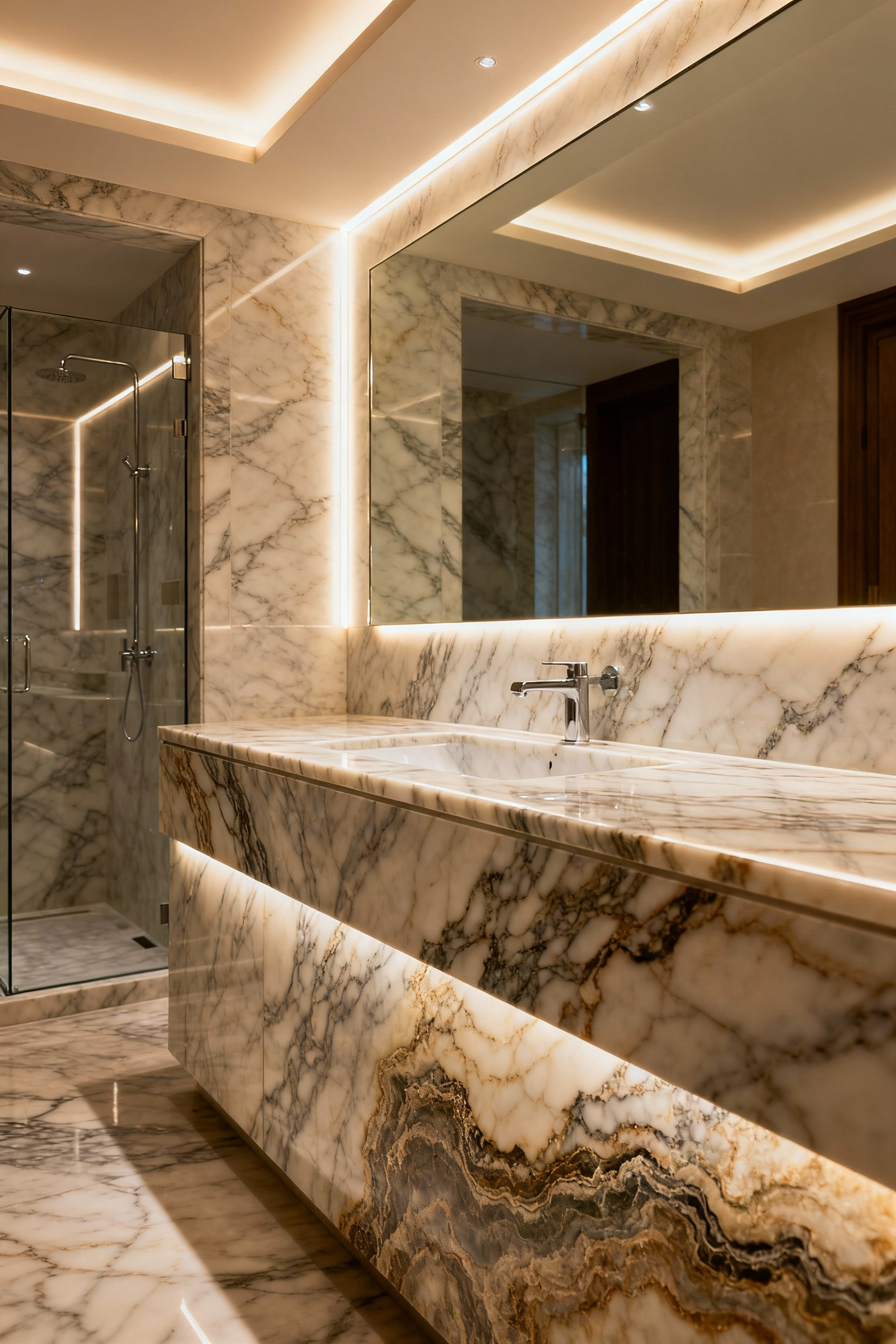
I often advise clients to visit the stone yard themselves. Touch the surfaces. A polished finish will amplify light and lend a formal elegance, while a honed or leathered finish offers a quieter, more tactile appeal. Spatially, stone makes its greatest impact on expansive surfaces—a book-matched marble shower wall that creates a mesmerizing, symmetrical focal point, or a vanity countertop carved from a single, dramatic slab. It is a commitment, yes, but its enduring beauty creates a profound sense of grounded luxury that elevates daily rituals into something truly special.
7. Innovating with Porcelain and Large-Format Slabs: Achieving Seamless Panoramas
While I adore natural stone, the innovations in porcelain are nothing short of breathtaking. Large-format porcelain slabs offer a new paradigm of minimalist elegance and engineered perfection. For those who seek seamless visual continuity, this material is transformative. It allows us to create sweeping, monolithic surfaces with almost no grout lines, achieving a look that is both pure and immensely practical. It’s the perfect marriage of high art and high performance.

The versatility is astonishing. Modern porcelain can meticulously replicate the most exotic marbles or the raw texture of concrete, often with superior durability and resistance to staining. In my professional experience, I find it particularly powerful in creating a wet room that feels less like a functional zone and more like an integrated, sculptural element of the room. A waterfall-edge vanity crafted from a single slab, or full-height wall cladding behind a tub, lends an architectural weight and modern sophistication that is effortless to maintain. It is the intelligent choice for a refined, contemporary lifestyle.
8. Integrating Artisanal Woods: Introducing Organic Warmth and Sustainable Sophistication
To balance the cool elegance of stone and porcelain, I always introduce the organic warmth of wood. The integration of artisanal woods provides a crucial tactile richness that speaks directly to our biophilic instincts, transforming the bathroom into a serene, spa-like sanctuary. The presence of natural wood has a grounding effect, connecting us to the natural world and imbuing the space with an inviting character. It feels personal and handcrafted.

Of course, the key is selecting the right wood and finish. Teak is a classic choice for its incredible water resistance, making it ideal for vanities or even a shower bench. Rich walnut lends an unparalleled sophistication to bespoke cabinetry. Spatially, a floating wood vanity can anchor a room while creating an illusion of lightness, and open shelving in a richly grained timber adds both function and decorative warmth. When handled with care—proper sealing and ventilation are non-negotiable—wood introduces a layer of sustainable sophistication that feels both luxurious and deeply comforting.
9. Refining Metal Accents: From Patinated Bronze to Lustrous Brass for Definitive Statements
Metal accents are the jewelry of the bathroom. These are the definitive statements that introduce contrast, define form, and add a final layer of curated luxury. A thoughtfully chosen faucet, mirror frame, or piece of hardware can elevate the entire design, turning functional components into deliberate works of art. The interplay of metal with the room’s other materials is where the true design magic happens.

Here’s what’s interesting: the trend is moving toward “living finishes.” Unlacquered brass, which develops a unique patina over time, tells an evolving story that is deeply personal to the home. For a more contemporary feel, brushed brass offers a softer glow, while polished nickel speaks to a timeless, classic elegance. And a sharp, matte black can provide a graphic, modern contrast. I advise clients to think of these choices not as afterthoughts, but as pivotal design elements. A sculptural freestanding tub filler in an antiqued bronze, for instance, becomes a focal point that lends the entire room a sense of history and permanence.
Curating Sensory Experiences: Exquisite Material Selection and Finishes (Part 2)
Beyond the classics of stone and wood, the world of design has opened up to a new generation of avant-garde materials. For those who wish to create a truly bespoke and forward-thinking sanctuary, exploring these innovative composites offers an opportunity to meld groundbreaking aesthetics with superlative performance, crafting a space that is as unique as it is functional.
10. Exploring Avant-Garde Composites: Unlocking Novel Textures and Formulations
For the truly modern connoisseur, the design conversation now includes avant-garde composite materials. This is where innovation meets artistry. Driven by a desire for both unique aesthetics and unmatched performance, these engineered formulations—like sophisticated solid surfaces, sintered stone, and advanced porcelains—allow for designs previously impossible. We can now create seamless, sculptural forms, from integrated vanities that flow from countertop to basin, to shower surrounds without a single grout line.
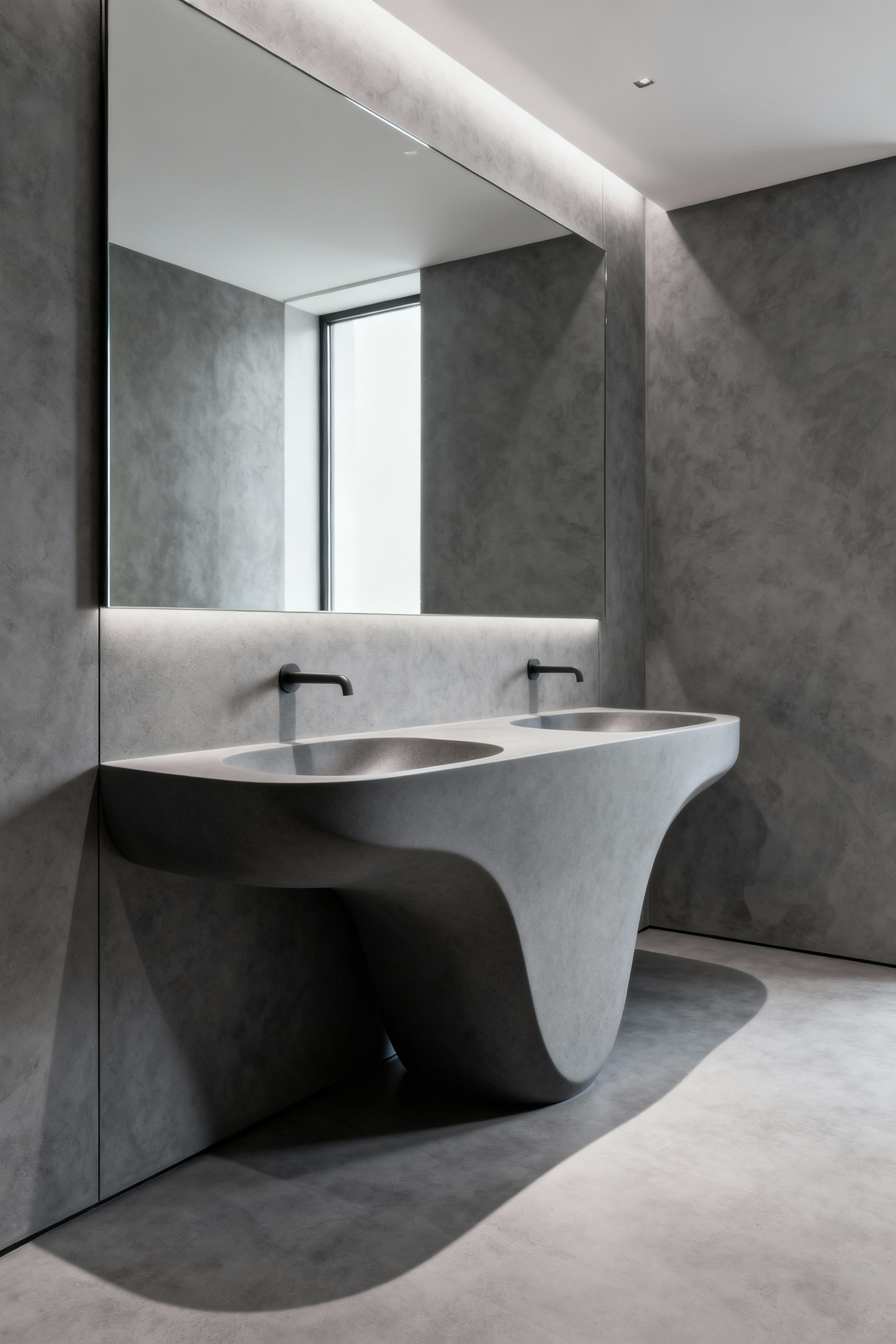
What really gets me is the creative freedom these materials unlock. Imagine a bathtub sculpted to perfectly fit the body’s contours, or a backlit panel of textured composite that provides a soft, ethereal glow. These materials are non-porous, incredibly durable, and can be thermoformed into shapes that defy convention. By embracing these advancements, we can design a bathroom that is a holistic retreat—a space that is not only visually stunning and easy to maintain but also feels tailored precisely to the individual. It is the new frontier of bespoke luxury.
Mastering Spatial Dynamics: Orchestrating Layout, Light, and Form (Part 1)
An exquisite bathroom is more than a collection of beautiful objects; it is a masterfully orchestrated space. The thoughtful manipulation of layout, light, and form is what elevates a utilitarian room into a personal sanctuary. It is here, in the shaping of perception and flow, that we find some of the most profound opportunities to create a truly sophisticated design.
11. Designing for Expansive Volume: Employing Strategic Mirrors and Reflective Surfaces
One of the most effective tools in any designer’s arsenal is the strategic use of mirrors. It’s an age-old trick because it works. But we can move beyond a simple framed mirror over the sink. I learned this when working on a compact powder room in a historic home; by cladding an entire wall in an antiqued mirror, we didn’t just make the room feel larger—we gave it an almost infinite, atmospheric depth. This is about artfully manipulating light and perception to cultivate an environment that feels generously proportioned.

Consider a full-height mirror to double the visual expanse of the room, or smoked and bronze mirrors to introduce a moodier, more sophisticated tone. Reflective surfaces aren’t limited to glass. High-gloss lacquer on cabinetry, polished stone floors that catch the light, or the subtle sheen of metallic fixtures all contribute to this dialogue of expansion. By thoughtfully placing these elements to bounce both natural and artificial light around the room, you can transform a constrained space into one that feels airy, open, and undeniably luxurious.
12. Sculpting Light: Integrating Layers of Ambient, Task, and Accent Illumination
Light is a sculptural medium. A well-designed bathroom never relies on a single overhead fixture. Instead, it orchestrates light as a symphony of layers, each with a specific purpose. This approach moves beyond simple function to evoke mood, highlight texture, and enhance the room’s architecture. It is through this careful layering that a bathroom truly comes alive, adapting to your needs throughout the day.
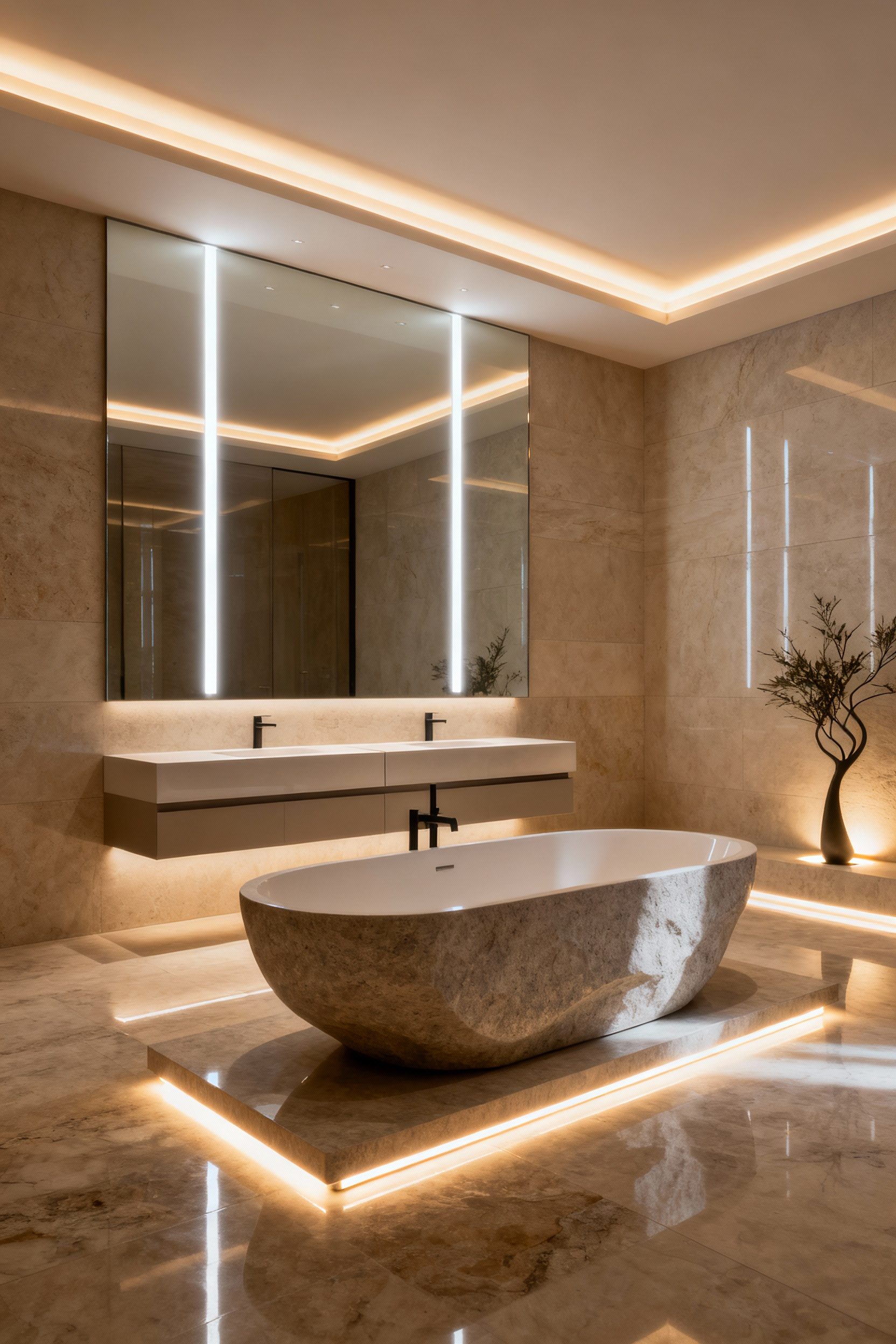
You need three key layers. Ambient light, perhaps from cove lighting or a central fixture, sets the overall tone. Task lighting, like a pair of elegant sconces flanking a mirror, provides clear, shadow-free illumination for grooming. Then there is accent lighting—the most dramatic layer. This could be a concealed LED strip washing down a textured stone wall or a single, beautiful pendant over a freestanding tub. Critically, each layer should be on a separate, dimmable circuit. This gives you complete control to create a bright, energizing space in the morning and a soft, serene retreat in the evening.
13. The Art of Concealed Storage: Achieving Uncluttered Serenity with Integrated Solutions
True luxury is not about what you see, but what you don’t. In the bathroom, this philosophy manifests as the art of concealed storage. A serene, uncluttered space has a profound effect on our mental state. The goal is to integrate storage so seamlessly that its presence is felt only in the effortless order it provides. It is the silent architect of tranquility.
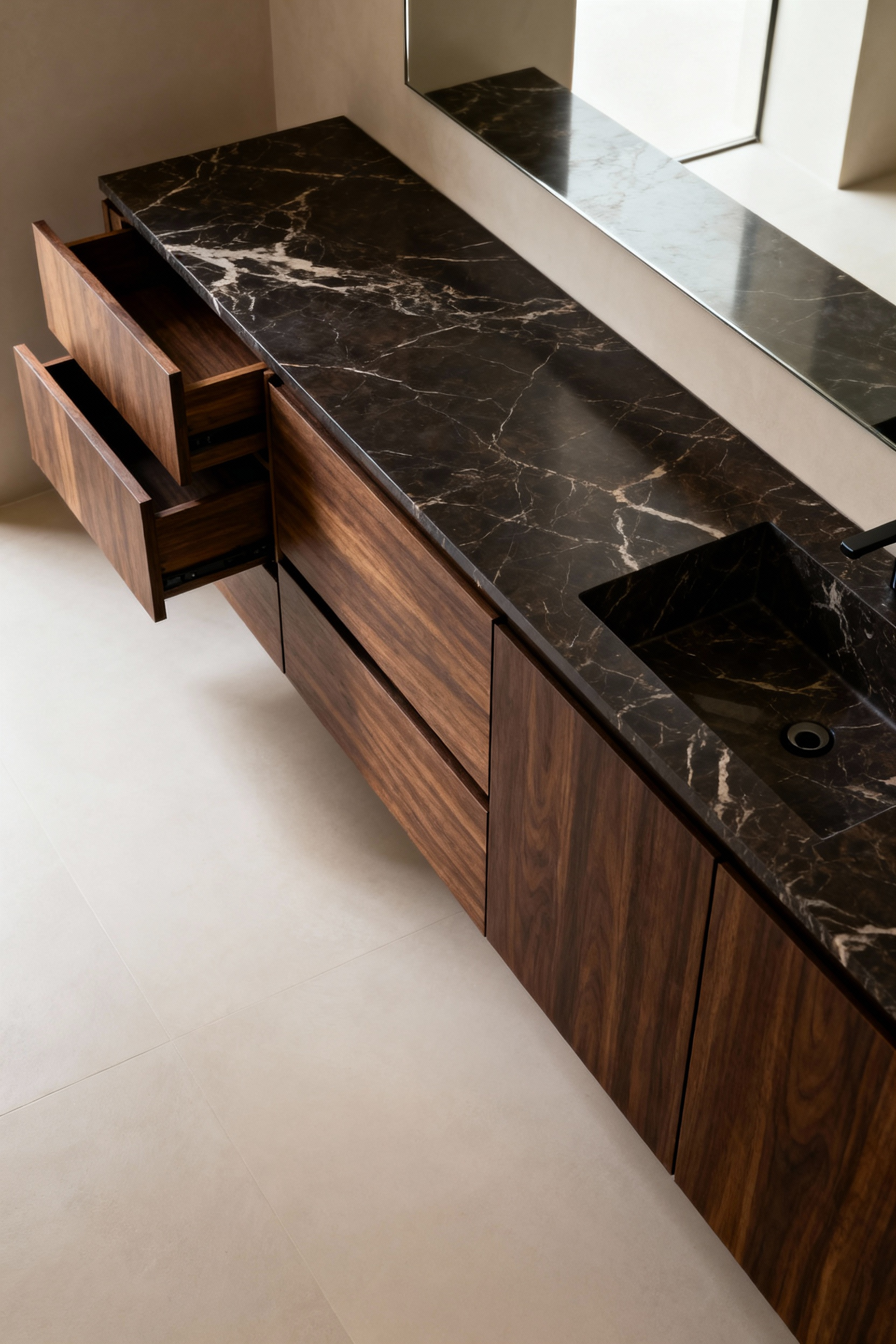
Bespoke joinery is the key. In my luxury retail design work, creating clean, uninterrupted surfaces was paramount, and I bring that discipline to residential projects. Think of full-height cabinetry with push-to-open fronts that are indistinguishable from the wall, or a mirrored medicine cabinet that sits perfectly flush. Within drawers, customized compartments keep everything in its place. In the shower, a tiled niche provides a discreet home for toiletries, eliminating visual clutter. This meticulous approach fosters a sense of calm and control, allowing the beauty of the design to resonate without distraction.
14. Crafting Bespoke Wet Rooms: Elevating Functionality with Seamless Design
The bespoke wet room represents the zenith of modern bathroom design—a space where the boundaries between showering and the rest of the room dissolve. This is a philosophical commitment to fluid transitions and an unparalleled spa-like experience. By creating a seamless, waterproofed environment, you achieve a look of ultimate sophistication and an incredible sense of openness. It is a bold statement of confidence in design.
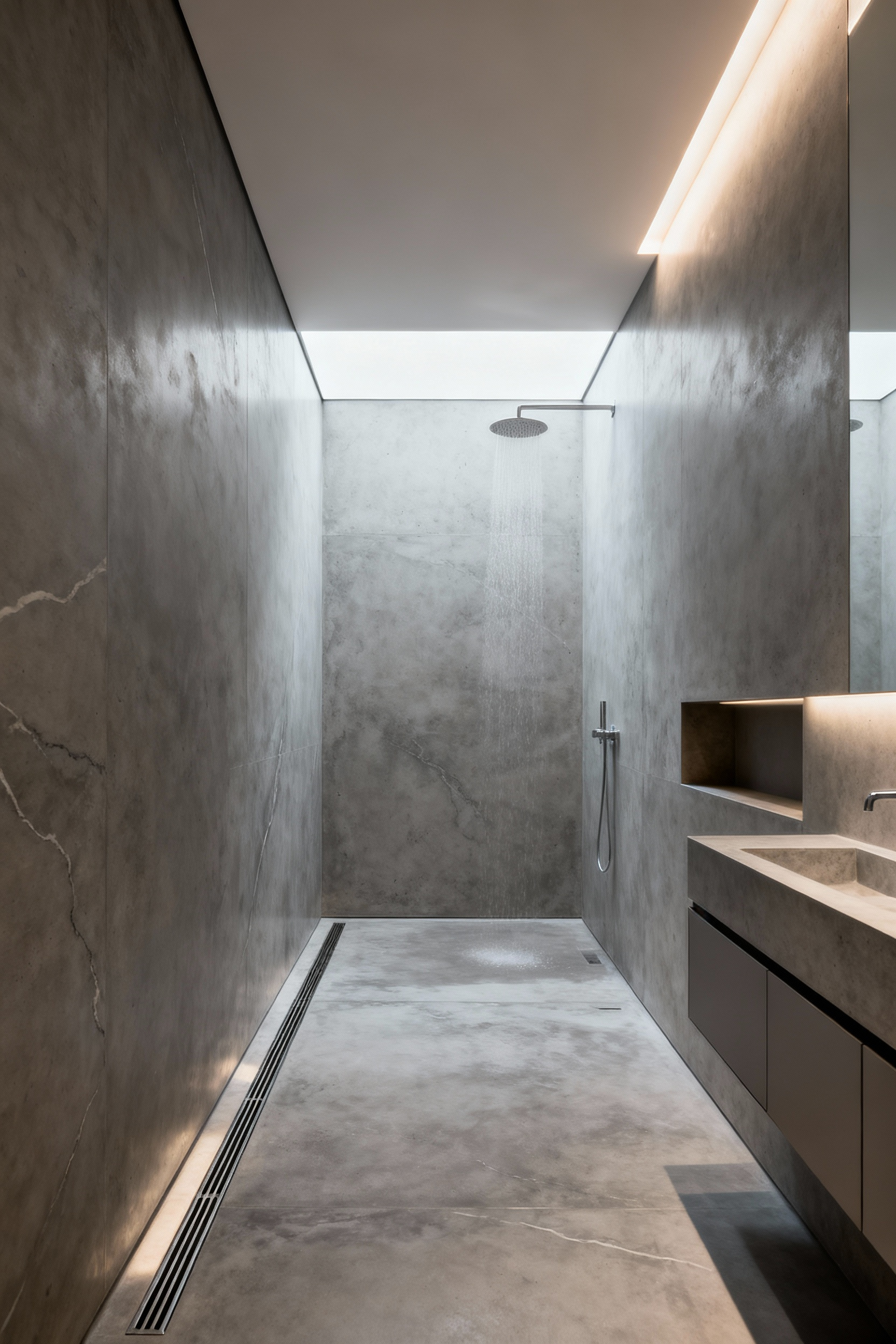
The success here is in the details. Large-format tiles or micro-cement minimize grout lines, enhancing the continuous flow. The floor requires a subtle, almost imperceptible gradient toward a discreet linear drain. While completely open plans are stunning, a single, frameless panel of glass can contain water splash without visually interrupting the space. The result is a profoundly liberating bathing experience. It’s also exceptionally practical—easy to clean and accessible. A wet room transforms the act of showering into a luxurious, immersive ritual, cementing its status as an indispensable element of discerning design.
Mastering Spatial Dynamics: Orchestrating Layout, Light, and Form (Part 2)
We continue our exploration of spatial dynamics by focusing on the power of the individual object. Here, we move beyond the arrangement of the room as a whole and consider how a single, iconic fixture can become an artistic statement—a sculptural centerpiece that defines the character of the entire space and elevates it to a personal gallery of curated design.
15. Articulating the Freestanding Masterpiece: Selecting Iconic Fixtures as Focal Points
A freestanding fixture—a magnificent bathtub or an elegant vanity—has a sculptural quality that immediately commands attention. Untethered from the walls, it exists as an object of art within the space. A freestanding tub, in particular, becomes the room’s heart, dictating flow and creating a focal point that speaks of indulgence and relaxation. Its placement is an architectural decision, designed to capture the best light or frame a beautiful view.

The materiality is crucial. A tub carved from a single block of marble feels ancient and elemental. One crafted from warm copper, developing a rich patina over time, introduces an artisanal, living quality. A freestanding vanity in dark walnut or with an integrated concrete basin provides a structured, modern counterpoint. These are not merely functional items; they are hero pieces. By giving them the space they deserve, you articulate a clear design statement that transforms the entire room’s character. In my professional experience, investing in one such masterpiece is often the single most impactful decision a client can make.
Enriching the Lifestyle Nexus: Technology, Wellness, and Personal Curation (Part 1)
The modern bathroom has become a pivotal nexus where cutting-edge technology, holistic wellness, and personal curation converge. It is no longer just a room for hygiene, but a personalized environment designed to enrich our daily lives. This section explores how discerning individuals are orchestrating these elements to forge bespoke sanctuaries of comfort and sophistication.
16. Implementing Smart Home Integration: Automating Comfort and Convenience
The most sophisticated technology is the technology you don’t see. Smart home integration in the bathroom is about creating an environment that is proactively responsive to your needs. This is the philosophy of seamless control, where comfort is automated and convenience is intuitive. It’s about technology that serves the design, rather than dominating it, working silently in the background to enhance your experience.
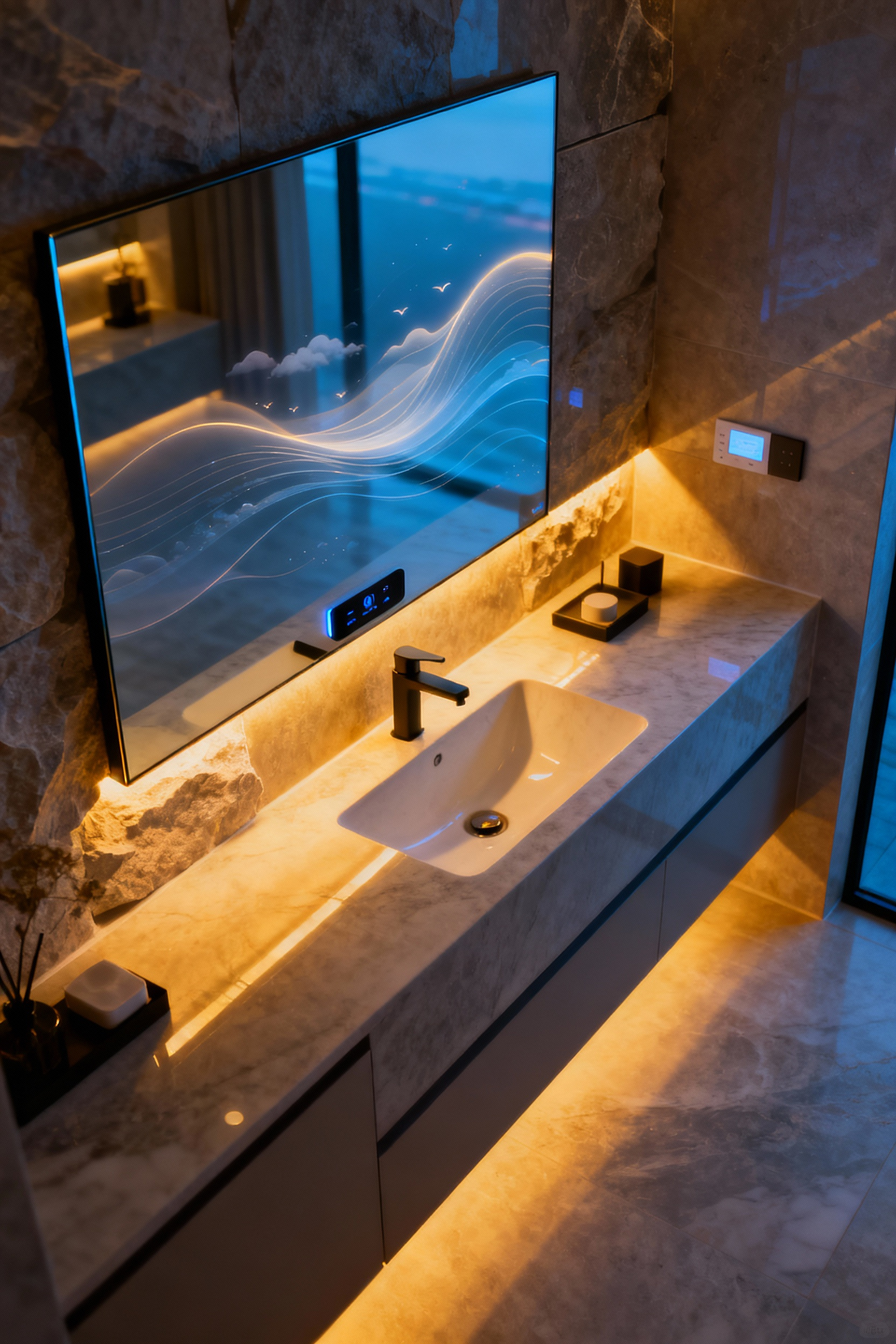
Imagine a bathroom where the lighting subtly shifts in color temperature throughout the day to support your circadian rhythm, where your shower begins at the perfect temperature with a simple voice command, and where heated floors gently warm before you wake. Smart mirrors can display the day’s weather, and ventilation systems can autonomously manage humidity. These systems allow for pre-set scenes—an invigorating “morning” mode or a calming “evening unwind” mode—that orchestrate light, sound, and temperature. This is the new definition of luxury: a space that anticipates your desires.
17. Curating an Experiential Spa Element: From Steam Showers to Chromotherapy Baths
Why leave home to visit a spa when you can create a private sanctuary for rejuvenation right here? This philosophy moves beyond mere function to curate a holistic, restorative experience that nurtures mind and body. Ultimate luxury is the ability to decompress and revitalize on demand, and the modern bathroom is the perfect place to do it. The focus is on engaging multiple senses to create a truly immersive therapeutic environment.
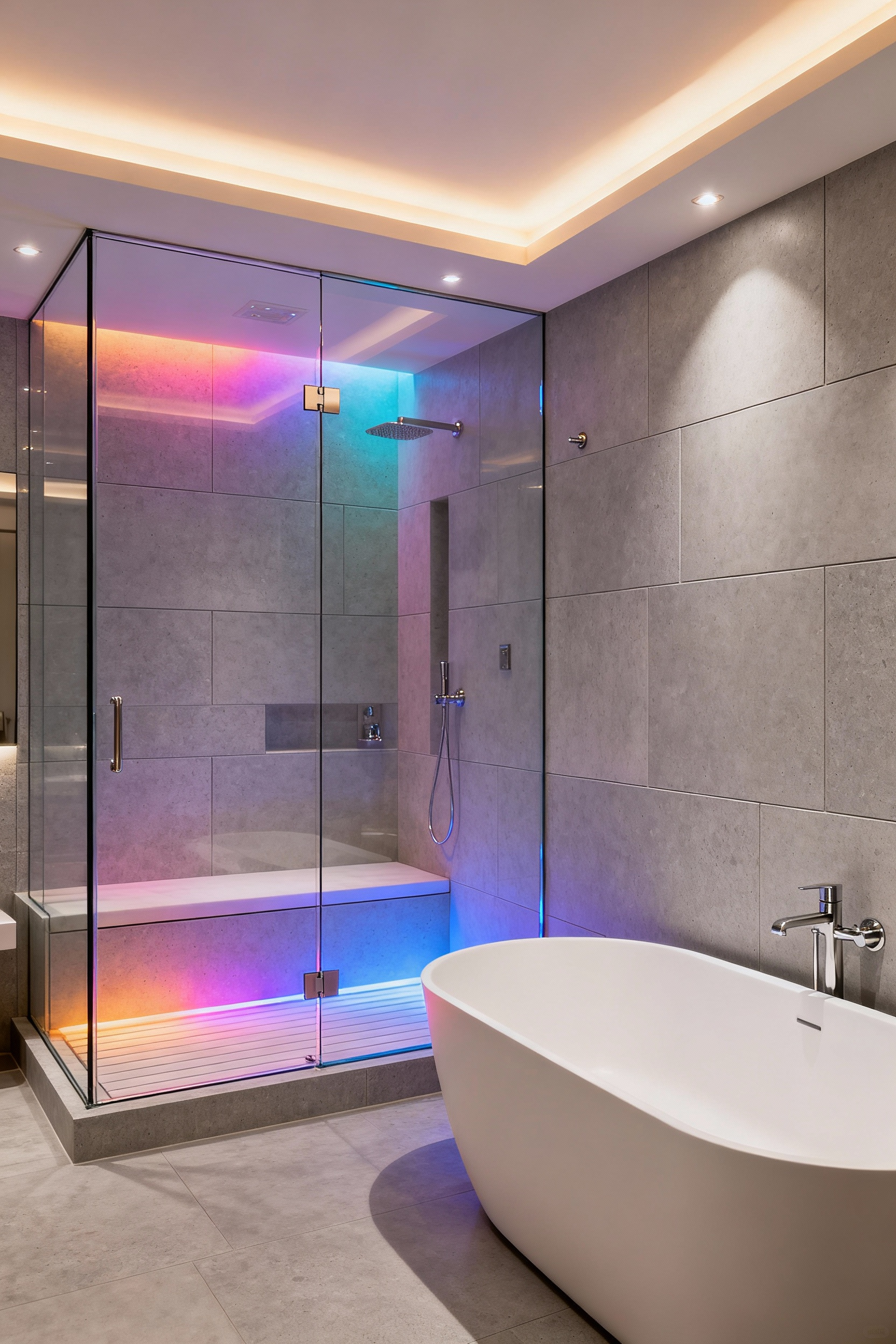
This could mean transforming a generous shower into a private steam room, clad in impervious marble or porcelain and fitted with a discreet steam generator. Bathtubs can become hubs of hydrotherapy and chromotherapy, with integrated jets and colored LED lighting cycles designed to energize or calm. From my work in high-end design, I’ve seen a surge in requests for these features. Aromatic diffusers can infuse the air with essential oils, and integrated, waterproof sound systems can provide a backdrop of meditative music. This is a direct investment in your well-being, embedding a commitment to self-care into the fabric of your daily routine.
18. Personalizing with Art and Artifacts: Infusing Individuality and Cultural Depth
A bathroom should be as personal and curated as any other room in your home. This philosophy champions the idea that this intimate space should be a resonant gallery for objects that hold meaning for you. It’s about infusing the room with individuality and cultural depth, making it a vibrant reflection of your passions, travels, and history. Sterile, impersonal luxury feels dated; the new luxury is deeply personal.
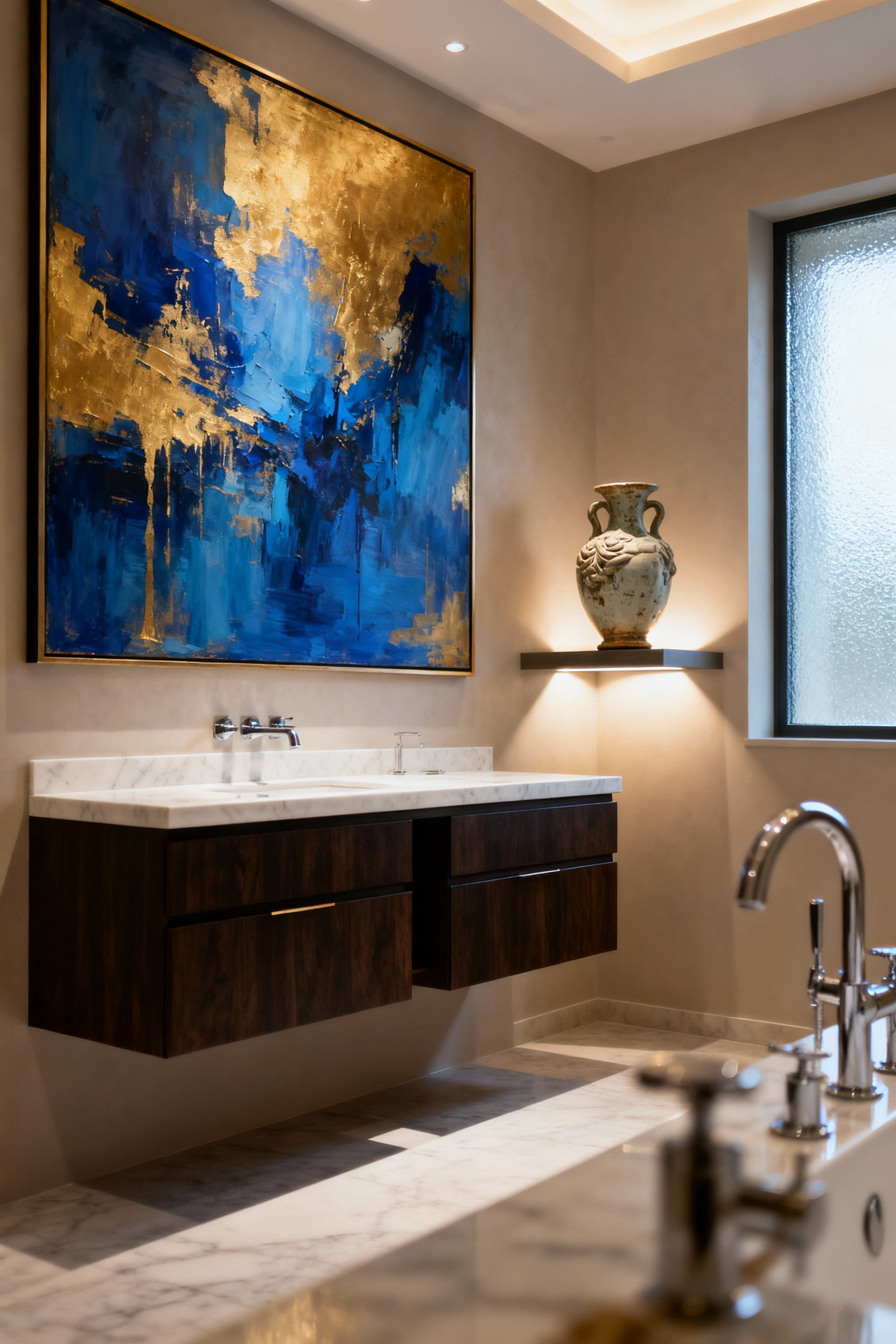
This is where you can truly express yourself. A striking photograph or a small sculpture can serve as a powerful focal point above a tub or within a niche. A collection of cherished artifacts can be arranged on a floating shelf. Be mindful of the environment, of course—choose materials that can withstand humidity, or place more delicate pieces behind glass. Even an ornate antique mirror, properly treated, or a beautifully woven textile used as a bath mat can add layers of story and character. This curation transforms a bathroom from a designed space into your space.
19. The Efficacy of Verdant Accents: Incorporating Live Botanicals for Biophilic Vitality
We circle back to our innate connection to nature by embracing the simple, yet profound, act of bringing life into the bathroom. Incorporating live botanicals is more than a decorative touch; it’s a dynamic contribution to your well-being. Plants actively purify the air, reduce stress, and introduce an element of organic vitality that softens hard surfaces and fosters a sense of tranquility. It’s a living, breathing component of the design.

The key is selecting plants that thrive in humidity and lower light, like ferns, orchids, or peace lilies. Their presentation matters, too. Place them in beautiful, sculptural planters. A trailing philodendron cascading from a high shelf can soften architectural lines, while a dramatic snake plant in a corner adds a grounding, vertical element. This seamless integration of nature into your daily ritual of self-care enhances the restorative quality of the room, turning it into a vibrant, healthy, and serene personal ecosystem.
Enriching the Lifestyle Nexus: Technology, Wellness, and Personal Curation (Part 2)
We conclude our exploration by examining the final layer of what makes a bathroom truly luxurious in the modern era: a conscious and deliberate approach to its impact. This is where impeccable style meets thoughtful substance, creating an environment that is not only beautiful but also intelligent and responsible.
20. Prioritizing Sustainable Luxuries: Eco-Conscious Choices for Enduring Elegance
Today, true luxury is defined by conscientiousness. A truly elevated space must blend impeccable design with a respect for provenance and ecological impact. What I tell my clients is that choosing sustainable materials is not a compromise; it is an upgrade. It’s a philosophy that champions enduring quality over transient disposability, creating a bathroom that feels good in every sense of the word.

This means seeking out FSC-certified wood for vanities, countertops made from recycled glass, and low-VOC paints that protect indoor air quality. It extends to function as well. Water-conserving fixtures, from dual-flush toilets to low-flow showerheads, can drastically reduce consumption without sacrificing the feeling of indulgence. Energy-efficient LED lighting, maximized use of natural light, and intelligent ventilation systems all contribute to a smaller environmental footprint. Prioritizing these eco-conscious choices creates a sanctuary that is not just a personal indulgence, but a testament to a mindful and sophisticated way of living.
Conclusion
Our journey through these 20 concepts has been an exercise in appreciating the art of intentionality. We have moved beyond superficial decoration to understand the philosophies that transform a bathroom into a sanctuary. From the foundational power of a personal design lexicon to the tactile beauty of natural materials and the quiet intelligence of integrated technology, each principle builds upon the last, contributing to a cohesive narrative of refined living. This is the essence of bathroom decoration inspiration at its most discerning level.
What I hope you take away from this is a new perspective—an understanding that luxury is not about any single object or trend, but about the harmonious interplay of light, form, material, and purpose. It is about crafting a space that not only serves your needs but also restores your spirit. The most successful designs are those that achieve a serene harmony, marrying artisanal quality with a deep sense of personal meaning.
You are now equipped with a framework for creating a bathroom that is a sublime reflection of your unique vision. Let these ideas serve as a catalyst for your own creativity. The dialogue of design is always evolving, and I encourage you to enter it with confidence, curating a space defined by unparalleled refinement, enduring elegance, and a constant source of personal comfort.
